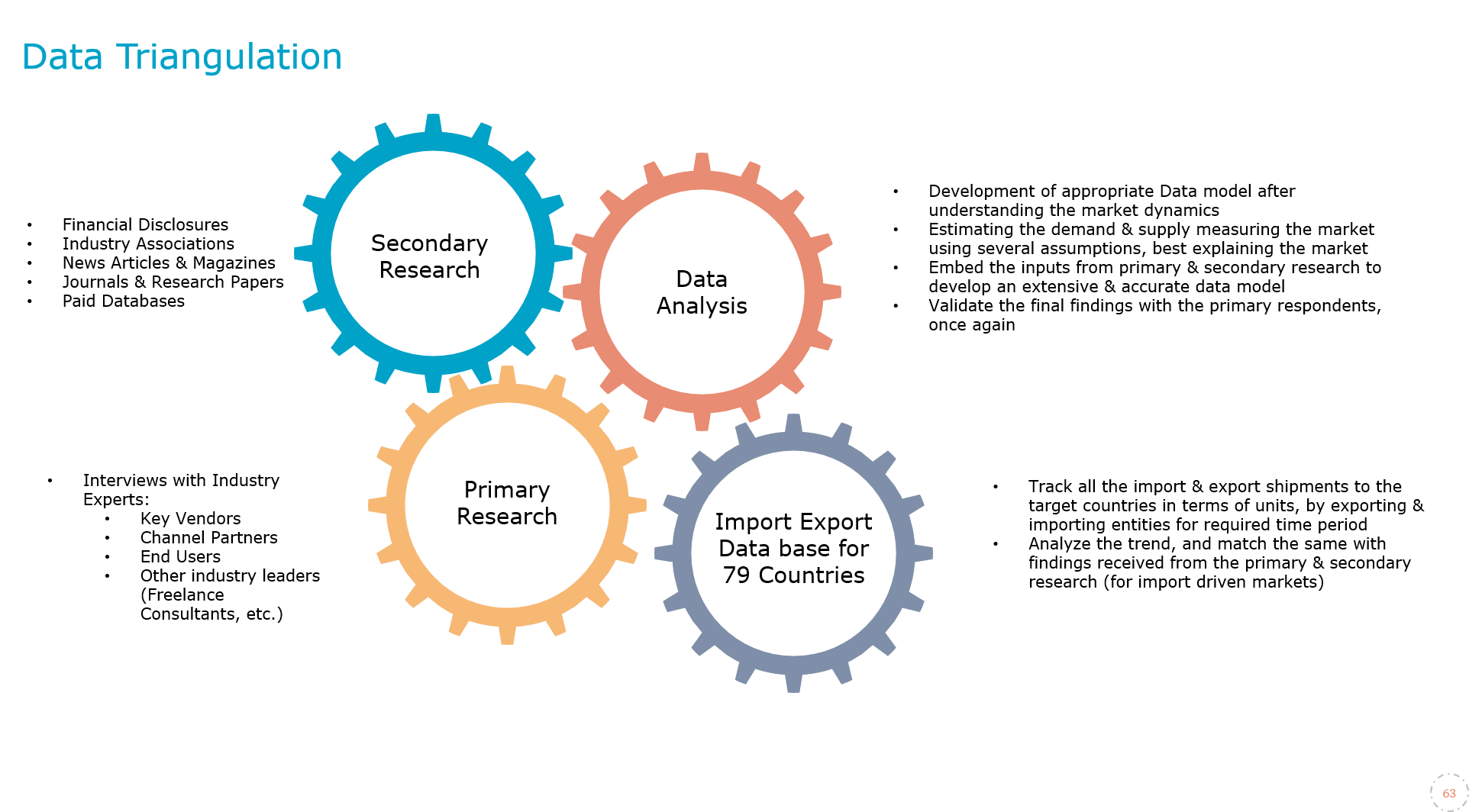
U.S. 3D Bioprinting Market Research Report: Forecast (2025-2030)
U.S. 3D Bioprinting Market - By Component (3D Bioprinters [Micro Extrusion Bioprinters, Inkjet 3D Bioprinters, Laser-Assisted Bioprinters, Stereolithography-Based Bioprinters, Magn...etic 3D Bioprinters, Other 3D Bioprinters], Bioinks [Natural Bioinks, Hybrid Bioinks, Synthetic Bioinks], Software, Consumables), By Material (Living Cells, Hydrogels, Extracellular Matrices, Other Materials), By Application (Research Applications [Drug Research, Regenerative Medicine, 3D Cell Culture], Clinical Applications [Skin, Bone & Cartilage, Blood Vessels, Other Clinical Applications]), By End User (Academic & Research Institutes, Pharmaceutical & Biotechnology Companies, Hospitals) and others Read more
- Healthcare
- Jan 2025
- Pages 121
- Report Format: PDF, Excel, PPT
Market Definition
3D bioprinting is a technique used to develop cells, tissues, and organs such as skin, ears, bladders, etc., that are exactly similar to those inside the human body.
Market Insights & Analysis: U.S. 3D Bioprinting Market (2025-30):
The U.S. 3D Bioprinting Market size was valued at around USD688 million in 2024 and is projected to reach USD1,887 million by 2030. Along with this, the market is estimated to grow at a CAGR of around 17.88% during the forecast period, i.e., 2025-30. The main reason behind this growth is the high demand for developing drugs that have high efficacy and that too in the least possible time. Doing clinical trials on the models made using 3D bioprinters helps in doing frequent tests and hence reducing the development time of a new drug by around 60%. Additionally, the use of such devices in the cosmetic industry has helped them develop skins for their consumers that accurately mimic their skin texture, i.e., color, glow, and all other parameters.
Moreover, the US government has banned the testing of new drugs on animals, i.e., the Federal Food, Drug, and Cosmetics Act of 1938 which mandates the test of new drugs on animals before human trials animals. This poses a challenge for pharmaceutical clinical trials which is addressed by the use of 3D-printed tissues and cells as they are similar to the ones present in the human body and help in knowing the precise impacts of the solutions developed. As a result, the demand for printers that are used to develop such models increases, and this demand is expected to increase in the coming years amid the increasing number of drug trials in the US.
| Report Coverage | Details |
|---|---|
| Historical Years | 2020-23 |
|
Base Years
|
2024
|
|
Forecast Years
|
2025-30
|
| Market Value in 2024 | USD688 million |
| Market Value in 2030 | USD1,887 million |
| CAGR (2025-30) | 17.88% |
| Top Key Players | CELLINK, Organovo, Aspect Biosystems, Allevi, Prellis Biologics, Stratasys, Advanced Solutions Life Sciences, LLC, regenHU Ltd, Poietis, 3D Bioprinting, others |
| Key Report Highlights |
|
Furthermore, the US has a very high focus on research and development processes. Their expenditures include spending on the development of new drugs with high efficacy and developing body organs that can be implanted inside the human body. For instance, the Center for Drug Evaluation and Research (CDER) approved around 55 drugs in 2023, and the cost included in the R&D processes of such medicines is more than USD314 million and goes up to USD4.46 billion for every such drug. This results in increasing demand for 3D bioprinting devices which are utilized in measuring the outcomes of such processes.
Hence superior advantages offered by these devices to various industries like cosmetics, pharmaceuticals, etc. have resulted in high growth of this market, which is expected to continue in the forecast period too
*Boost strategic growth with in-depth market analysis - Get a free sample preview today!

U.S. 3D Bioprinting Market Driver:
Increasing Adoption by the Pharmaceutical Industry – 3D bioprinting devices are rapidly being adopted by the pharmaceutical industry. This is because models produced by such devices are highly similar to the actual structures of cells or tissues inside the human body. This helps companies develop highly precise drugs that can accurately attack foreign cells. Moreover, tests can also be done on such structures thus eliminating the requirement of humans or animals for monitoring the impact of that new drug. Overall, these devices help the pharmaceutical industries in various stages of drug development and help them address the main challenges faced by them, i.e., the high cost and time involved in the launch of new drugs. Therefore, due to the ease offered by 3D bio-printed cell engineering to pharmaceuticals, they have experienced significant growth in the past years, and this trend is expected to continue in the forecast period as well.
U.S. 3D Bioprinting Market Opportunity:
Ongoing Research on Making Functional Body Organs Using 3D Bioprinting – Various organizations are researching using this technology to develop live body organs such as heart, lungs, kidneys, etc. For now, only the bladder is an organ that has been successfully printed and implanted into the human body. These efforts are done to address the gap between the donated organs and the waiting list. For instance, as of September 2024, there were around 89,792 people on the waiting list for a kidney in the United States, but only around 27,332 kidneys were transplanted in 2023. As soon as the research on other organs is complete, the demand for 3D Bioprinting devices will also increase to meet the demand from the continuously expanding waiting list. Therefore, the use of this technique for making various body organs will increase the demand for 3D bioprinting devices in the coming years, thus providing a lucrative growth opportunity for the market.
U.S. 3D Bioprinting Market Challenge:
High Cost of 3D Bioprinters to Hinder the Market Growth – The cost of 3D bioprinters is very high due to which the market faces a challenge in its growth. This is because various small hospitals and clinics cannot afford such devices and outsource them as a service when required. For instance, the average cost of a 3D bioprinter is more than USD12,000. This also helps them achieve high-quality products with precise structures, as required. As a result, they not only save the expenses on devices but also get the desired products to achieve customer satisfaction. This results in a decrease in the sales of 3D bioprinting devices. Therefore, due to the high cost of 3D bioprinters, they are not directly purchased but outsourced, thus presenting a challenge to the growth of the market.
U.S. 3D Bioprinting Market Trend:
Light-Based 3D Bioprinters Gaining Traction – 3D bioprinters that create the required models using their images have gained popularity in recent years. Such devices use bio-inks that are light-sensitive. As a result, the area on which light falls converts to solid, thus creating an accurate model. This technology is highly popular for its high consistency in creating accurate complex structures every time due to which various companies are inclined towards developing printers with this technology. For instance, the third generation of its Lumen X, a light-based bioprinter can create live cells with high control of temperature to achieve the desired stiffness of the model. As a result, this technology further pushes the market on the trajectory of growth. Therefore, due to this technology’s ability to address the challenge of developing complex structures, it has gained high traction, and this trend is expected to remain in the forecast years as well.
U.S. 3D Bioprinting Market (2025-30): Segmentation Analysis
The U.S. 3D Bioprinting Market study of MarkNtel Advisors evaluates & highlights the major trends and influencing factors in each segment. It includes predictions for the period 2025–30 at the country level. Based on the analysis, the market has been further classified as:
Based on Application:
- Research Applications
- Drug Research
- Regenerative Medicine
- 3D Cell Culture
- Clinical Applications
- Skin
- Bone & Cartilage
- Blood Vessels
- Other Clinical Applications
Based on the application, 3D bioprinters are most widely used in research applications, thus holding a market share of around 70%. This is mainly because of the high focus of the United States on research of new drugs to cure various types of chronic diseases more effectively. For instance, the FDA has approved 50 new drugs in 2024. As 3D models help companies to create an exact structure of the infected body part and do research effectively, the demand for 3D bioprinters increases. Additionally, 3D cell culture made using bioprinters also helps the companies to see the impact of those new drugs on the human body as they respond to the drugs similarly to the human body.
Moreover, they are used to develop regenerative medicines with high efficacy that can cure major health problems including cancer. Therefore, to ensure the proper development and functionality of new drugs, 3D bioprinting devices are highly used in research applications, and this dominance is expected to remain in the coming years as well.
Based on End User:
- Academic & Research Institutes
- Pharmaceutical & Biotechnology Companies
- Hospitals
Based on the end user, pharmaceutical and biotechnology companies lead the market with a share of around 64%. This is because of the large number of such companies present in the US. For instance, there were more than 5,000 pharmaceutical companies in the US in 2024. Such companies have a high need to ensure the proper functionality of new products that they develop. This can be achieved through clinical trials, which was a difficult process in the past when trials were done on humans or animals, but now 3D models made by bioprinters help to address this challenge. Therefore, due to the vast pharmaceutical industry and its testing needs, this segment has dominated the market in the past years, and this dominance is expected to continue in the future years as well.
U.S. 3D Bioprinting Industry Recent Development:
- 2024: Aspect Biosystems received an investment of around USD72.75 million from the governments of Canada and British Colombia. This investment is made to support the company’s multi-year project worth around USD200 million, aimed at advancing the development of bioprinted tissue therapeutics.
- 2024: Poietis collaborated with HVD Life Science, a company with expertise in supplying and maintaining medical devices. This collaboration aimed to distribute the new NGB-RTM platform of Poietis in Austria and Germany.
Gain a Competitive Edge with Our U.S. 3D Bioprinting Market Report
- U.S. 3D Bioprinting Market Report by MarkNtel Advisors provides a detailed & thorough analysis of market size & market share, growth rate, competitive landscape, and key players. This comprehensive analysis helps businesses gain a holistic understanding of market dynamics & make informed decisions.
- This report also highlights current market trends & future projections, allowing businesses to identify emerging opportunities & potential challenges. By understanding market forecasts, companies can align their strategies & stay ahead of the competition.
- U.S. 3D Bioprinting Market Report aids in assessing & mitigating risks associated with entering or operating in the market. By understanding market dynamics, regulatory frameworks, and potential challenges, businesses can develop strategies to minimize risks & optimize their operations.
*Reports Delivery Format - Market research studies from MarkNtel Advisors are offered in PDF, Excel and PowerPoint formats. Within 24 hours of the payment being successfully received, the report will be sent to your email address.
Frequently Asked Questions
- Market Segmentation
- Introduction
- Product Definition
- Research Process
- Assumptions
- Executive Summary
- The US 3D Bioprinting Market Policies, Regulations, and Product Standards
- The US 3D Bioprinting Market Trends & Developments
- The US 3D Bioprinting Market Dynamics
- Growth Drivers
- Challenges
- The US 3D Bioprinting Market Hotspot & Opportunities
- The US 3D Bioprinting Market Value Chain Analysis
- The US 3D Bioprinting Market Outlook, 2020-2030F
- Market Size & Outlook
- By Revenue (USD Million)
- Market Share & Outlook
- By Component
- 3D Bioprinters- Market Size & Forecast 2020-2030, USD Million
- Micro Extrusion Bioprinters- Market Size & Forecast 2020-2030, USD Million
- Inkjet 3D Bioprinters- Market Size & Forecast 2020-2030, USD Million
- Laser-Assisted Bioprinters- Market Size & Forecast 2020-2030, USD Million
- Stereolithography-Based Bioprinters- Market Size & Forecast 2020-2030, USD Million
- Magnetic 3D Bioprinters- Market Size & Forecast 2020-2030, USD Million
- Other 3D Bioprinters- Market Size & Forecast 2020-2030, USD Million
- Bioinks- Market Size & Forecast 2020-2030, USD Million
- Natural Bioinks- Market Size & Forecast 2020-2030, USD Million
- Hybrid Bioinks- Market Size & Forecast 2020-2030, USD Million
- Synthetic Bioinks- Market Size & Forecast 2020-2030, USD Million
- Software- Market Size & Forecast 2020-2030, USD Million
- Consumables- Market Size & Forecast 2020-2030, USD Million
- 3D Bioprinters- Market Size & Forecast 2020-2030, USD Million
- By Material
- Living Cells- Market Size & Forecast 2020-2030, USD Million
- Hydrogels- Market Size & Forecast 2020-2030, USD Million
- Extracellular Matrices- Market Size & Forecast 2020-2030, USD Million
- Other Materials- Market Size & Forecast 2020-2030, USD Million
- By Application
- Research Applications- Market Size & Forecast 2020-2030, USD Million
- Drug Research- Market Size & Forecast 2020-2030, USD Million
- Regenerative Medicine- Market Size & Forecast 2020-2030, USD Million
- 3D Cell Culture- Market Size & Forecast 2020-2030, USD Million
- Clinical Applications- Market Size & Forecast 2020-2030, USD Million
- Skin- Market Size & Forecast 2020-2030, USD Million
- Bone & Cartilage- Market Size & Forecast 2020-2030, USD Million
- Blood Vessels- Market Size & Forecast 2020-2030, USD Million
- Other Clinical Applications- Market Size & Forecast 2020-2030, USD Million
- Research Applications- Market Size & Forecast 2020-2030, USD Million
- By End User
- Academic & Research Institutes- Market Size & Forecast 2020-2030, USD Million
- Pharmaceutical & Biotechnology Companies- Market Size & Forecast 2020-2030, USD Million
- Hospitals- Market Size & Forecast 2020-2030, USD Million
- By Region
- North-East
- Mid-West
- West
- South
- By Company
- Company Revenue Shares
- Competitor Characteristics
- By Component
- Market Size & Outlook
- The US Living Cells 3D Bioprinting Market Outlook, 2020-2030F
- Market Size & Outlook
- By Revenue (USD Million)
- Market Share & Outlook
- By Component- Market Size & Forecast 2020-2030, USD Million
- By Application- Market Size & Forecast 2020-2030, USD Million
- By End User- Market Size & Forecast 2020-2030, USD Million
- Market Size & Outlook
- The US Hydrogels 3D Bioprinting Market Outlook, 2020-2030F
- Market Size & Outlook
- By Revenue (USD Million)
- Market Share & Outlook
- By Component- Market Size & Forecast 2020-2030, USD Million
- By Application- Market Size & Forecast 2020-2030, USD Million
- By End User- Market Size & Forecast 2020-2030, USD Million
- Market Size & Outlook
- The US Extracellular Matrices 3D Bioprinting Market Outlook, 2020-2030F
- Market Size & Outlook
- By Revenue (USD Million)
- Market Share & Outlook
- By Component- Market Size & Forecast 2020-2030, USD Million
- By Application- Market Size & Forecast 2020-2030, USD Million
- By End User- Market Size & Forecast 2020-2030, USD Million
- Market Size & Outlook
- The US 3D Bioprinting Market Key Strategic Imperatives for Success & Growth
- Competition Outlook
- Company Profiles
- CELLINK
- Business Description
- Product Portfolio
- Strategic Alliances or Partnerships
- Recent Developments
- Financial Details
- Others
- Organovo
- Business Description
- Product Portfolio
- Strategic Alliances or Partnerships
- Recent Developments
- Financial Details
- Others
- Aspect Biosystems
- Business Description
- Product Portfolio
- Strategic Alliances or Partnerships
- Recent Developments
- Financial Details
- Others
- Allevi
- Business Description
- Product Portfolio
- Strategic Alliances or Partnerships
- Recent Developments
- Financial Details
- Others
- Prellis Biologics
- Business Description
- Product Portfolio
- Strategic Alliances or Partnerships
- Recent Developments
- Financial Details
- Others
- Stratasys
- Business Description
- Product Portfolio
- Strategic Alliances or Partnerships
- Recent Developments
- Financial Details
- Others
- Advanced Solutions Life Sciences, LLC
- Business Description
- Product Portfolio
- Strategic Alliances or Partnerships
- Recent Developments
- Financial Details
- Others
- regenHU Ltd
- Business Description
- Product Portfolio
- Strategic Alliances or Partnerships
- Recent Developments
- Financial Details
- Others
- Poietis
- Business Description
- Product Portfolio
- Strategic Alliances or Partnerships
- Recent Developments
- Financial Details
- Others
- 3D Bioprinting
- Business Description
- Product Portfolio
- Strategic Alliances or Partnerships
- Recent Developments
- Financial Details
- Others
- Others
- CELLINK
- Company Profiles
- Disclaimer
MarkNtel Advisors follows a robust and iterative research methodology designed to ensure maximum accuracy and minimize deviation in market estimates and forecasts. Our approach combines both bottom-up and top-down techniques to effectively segment and quantify various aspects of the market. A consistent feature across all our research reports is data triangulation, which examines the market from three distinct perspectives to validate findings. Key components of our research process include:
1. Scope & Research Design At the outset, MarkNtel Advisors define the research objectives and formulate pertinent questions. This phase involves determining the type of research—qualitative or quantitative—and designing a methodology that outlines data collection methods, target demographics, and analytical tools. They also establish timelines and budgets to ensure the research aligns with client goals.
2. Sample Selection and Data Collection In this stage, the firm identifies the target audience and determines the appropriate sample size to ensure representativeness. They employ various sampling methods, such as random or stratified sampling, based on the research objectives. Data collection is carried out using tools like surveys, interviews, and observations, ensuring the gathered data is reliable and relevant.
3. Data Analysis and Validation Once data is collected, MarkNtel Advisors undertake a rigorous analysis process. This includes cleaning the data to remove inconsistencies, employing statistical software for quantitative analysis, and thematic analysis for qualitative data. Validation steps are taken to ensure the accuracy and reliability of the findings, minimizing biases and errors.

4. Data Forecast and FinalizationThe final phase involves forecasting future market trends based on the analyzed data. MarkNtel Advisors utilize predictive modeling and time series analysis to anticipate market behaviors. The insights are then compiled into comprehensive reports, featuring visual aids like charts and graphs, and include strategic recommendations to inform client decision-making









